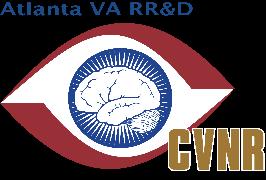




























More than 100 people recently attended Senior Day at the Marcus Jewish Community Center of Atlanta (MJCCA) presented by AgeWell Atlanta, a collaborative partnership to help older adults and caregivers navigate the aging process. Senior Day is a quarterly event that brings seniors from around Atlanta to experience a variety of social, educational and fitness programs.
Highlights of the day included: a speaker presentation given by John Eaves, congressional candidate and third-generation black Jew; Tu B’Shvat activities that included a dance party given by the Israeli Shinishinim; and activities where participants prepared care packages for veterans and made masterpieces themed around Valentine’s Day.

The next AgeWell Senior Day at the MJCCA is scheduled for Monday, May 11. AgeWell founding partners are the MJCCA, Aviv Older Adult Services of Jewish Family and Career Services, Jewish Home Life and Jewish Federation of Greater Atlanta. For more information, visit atlantajcc.ama.

Cobb Senior Services will present the #Change the Way You Age EXPO on Wednesday, May 13, 9 a.m.-1:30 p.m. at the Cobb Count Civic Center, 548 S. Marietta Parkway, Marietta 30060.
The expo is a great place to get information and have a good time. More than 50 exhibitors representing services for the 55+ community will be there. Find out what’s happening at your local senior center. Learn about senior housing, in-home care, assistive technology, Medicare, veteran’s benefits and more.
Admission and parking are free, and there will be door prizes. The expo is open to the public regardless of age or residency.

Richard Sussman not only appreciates Atlanta’s nickname of ‘a city in a forest,’ he brings that catchy phrase right back home.
“I have no grass,” he said of his home in the city of Atlanta. “Our landscaping is trees and shrubs and raised beds. I have completely eliminated grass.”
Sussman had plenty of opportunities to get up-close and personal to sturdy trunks and leafy branches during a career with the U.S. Forest Service. Now retired, he’s taken that knowledge and his expertise as a University of Georgia Master Gardner and put it to good use with Trees Atlanta, the non-profit which over the last 35 years has worked tirelessly to protect Atlanta’s existing tree canopy and help grow new green space.
During April, the group plans to take part in the 50th observance of Earth Day on April 22 by doing a tree planting project and educational programs. But understandably, the group’s bigger push has historically come on Arbor Day. In addition to that, a much bigger and decade-long offensive has just launched.
Sussman is one of a strong corps of volunteers that helps with various aspects of the group founded in 1985. They perform tasks ranging from actual plantings to leading tours along the wildly popular BeltLine Trail—which Trees Atlanta has dubbed an arboretum, a botanical garden devoted to trees—to handling various datacollection and administrative tasks.
Older adults are key to that effort, according to volunteer coordinator Susan Pierce Cunningham. She said many of the project leaders who helm various group initiatives are older volunteers. They work with staffers who are site coordinators—and Pierce Cunningham indicated that they are infinitely valuable.
“Just like in all aspects of life, they have more life experience with everything,” she said. “That means they understand more quickly what we’re trying to

back in 2012. He seems to delight in expounding on the value of the hundreds of graceful magnolias, oaks, evergreens and other species thrusting skyward along with shrubs and native grasses. He’s also quick to point out how the plantings create a transportation route for invaluable pollinators—birds, bats, insects and the like.
The longtime volunteer said the native grass plantings proved controversial in some quarters but added that “native grasses survive very well in difficult conditions. That’s different from putting in a lawn that requires pesticides and herbicides.”
Lawrence Richardson, another

accomplish. Also, by that stage in life, they have a better idea of what they’re interested in, so they come to us with a passion for tree preservation. And if they’re retired, they have more time to devote.”
That raises the questions: just what has Trees Atlanta accomplished since its modest founding aimed at planting trees in downtown Atlanta? And what’s yet to come?
The short answer to both queries is-quite a lot. It’s like the old saying about mighty oaks growing from little acorns.
“Trees” has broadened to include community tree planting programs in Atlanta and a number of suburbs, the ambitious BeltLine Arboretum, ongoing tree care, a kids’ program, workshops and educational events and advocacy efforts aimed at preserving and possibly expanding Atlanta’s tree canopy. The group said the city’s tree coverage stands at around 47% and is slowly dropping.
Sussman is one of the docents who leads tours along the BeltLine, having joined the initial phase of the program
senior volunteer, pointed out that shade helps to moderate temperatures in the midst of high-density urban development and that trees benefit the atmosphere by absorbing carbon dioxide and releasing oxygen.
Richardson also leads BeltLine tours and speaks to community groups—and he doesn’t mind getting his hands dirty. Some of the trees planted along the BeltLine bear his touch.
Elaborating on his path to involvement: “After moving here in 2007, I wanted to do some planting and gardening, and
being from up north I really didn’t know a lot about southern soil and plants. I thought (getting involved with the group) would be a good way to learn.”
Learn he did, as he took the group’s “Treekeepers” course and then built on that knowledge. He was named Volunteer of the Year in 2014.
Co-executive director of the group Greg Levine is also bullish about the help older adults have provided. He said they helped plant about 7,000 trees last year in 70 different neighborhoods in Atlanta and nearby cities. Volunteers also aided in reforestation in some 30 green spaces, wading into such tasks as removing aggressive and invasive species such as Chinese Privet.
Sussman, for his part, does data collection on the city’s urban forests to answer such questions as, “Are trees previously identified or planted still standing and are they properly marked?”. Others serve on teams giving at least two years of follow-up care to relatively new plantings.
And “we have a senior who is helping us write and communicate our strategic plan,” said Levine.
Then there’s the advocacy piece.
Richardson is a member of the Atlanta Tree Conservation Commission, whose website outlines a role in assisting in “the protection, maintenance and regeneration of the trees and other forest resources of Atlanta.” The group also oversees educational and other programs and hears and decides appeals of administrative officials’ decisions.


With a rewrite of the city’s tree ordinance pending, he has firm ideas on what he’d like to see done, calling “disjointed” the current process for appeals from city decisions on how new and existing trees should be handled in the course of residential and commercial construction.
“By the time the city arborist gets involved on whether trees should be removed, plans often have already been approved,” he said, adding he’d like to see a more “team-focused” effort. He said he understands that the city
has recently gotten the arborist division involved earlier in the process, but more work needs to be done.
Levine’s thinking lies along similar lines.
He believes regulations should reduce disturbance on residential lots; he’d like to see the allowance for disturbance maxed out to 60-65%. Levine also wants better regulations for planting trees in parking lots that includes a goal of 50% canopy coverage, as well as better protection for longer-lived native species. That protection would require creative solutions to design around existing trees.
Levine said he’s been involved for 24 years and with a degree in landscape architecture, his passion has long been for nature and forests. He lamented that “a
lot of projects remove forests for not-the-most attractive buildings and designs. I want to make urban areas better working with landscape architects.”
Preservation is indeed one goal of the group’s “One Million Trees” initiative launched on Feb. 20, but it’s far from the only facet. The effort will also include trees planted on both city land and public projects and others installed by residents and businesses on private property.

“Trees” plans to fold in ten non-profit groups in what’s billed as uniting diverse communities and approaches in a fight against climate change as well as environmental stresses stemming from urban growth. They aim to finish the far-
reaching campaign within 10 years.
Older adults helping with the group said that above and beyond such lofty goals, getting involved is just plain fun.
“You meet a lot of great people from all walks of life,” said Richardson. “There’s a common purpose, exercise and fresh air. You learn a lot about the city and the people and neighborhoods.”



 By Collin Kelley
By Collin Kelley
Blue Heron Nature Preserve has plenty to celebrate in April. Not only will the North Buckhead environmental center mark its 20th anniversary on Earth Day, but it’s also honoring the arrival of a new executive director and the opening of phase one of the Blueway Trail. The Roswell Road environmental center installed two new bridges
connecting 30 acres of greenspace with a three-mile walking trail known as the Blueway Trail. The project took three years to complete and Blue Heron raised over $750,000 for trail construction and improvements.

“Visitors can now travel seamlessly to all three Blue Heron properties. It’s a significant milestone as we continue to grow and evolve,” said outgoing executive director Kevin McCauley. “Plans for Phase 2 include linking Blue Heron’s trails to nearby Chastain Park and PATH400.”
A free festival is planned to introduce the new trail network to the public during the annual Earth Day Celebration on April 25. Highlights will include music, food, art and family-friendly activities.
The nature center is also celebrating the arrival of award-winning architect and environmentalist Melody Harclerode as its new executive director. Harclerode’s credentials include stints as director of the Sandy Springs Conservancy and program coordinator at Arabia Mountain.
“We are thrilled to welcome Melody to Blue Heron,” McCauley said. “She has a passion for the natural world and brings a wealth
of experience to expand the opportunities for us to bring an understanding and appreciation for this special place.”

“Blue Heron Nature Preserve has inspired children and adults about nature through the arts, education, conservation, research and innovative projects for 20 years,” Harclerode said. “Building upon Kevin McCauley’s accomplishments, I am honored to work with the staff, board members and volunteers as the new executive director, to boost the impact, support and appreciation of this amazing green space in Atlanta.”
Blue Heron Nature Preserve shares its facilities at 4055 Roswell Road with the Atlanta Audubon Society and The Amphibian Foundation, making the preserve an environmental asset unlike any other in metroAtlanta.

Learn more about Blue Heron Nature Preserve, its many events and how to support the nature preserve at bhnp.org.
Here’s a sampling of the many area organizations that are dedicated to preserving and protecting our natural landscapes and resources. Check out their websites for special Earth Day events.
Blue Heron Nature Preserve bhnp.org
Chattahoochee Nature Center chattnaturecenter.org
Chattahoochee Riverkeeper chattahoochee.org
EarthShare Georgia earthsharega.org
Hands On Atlanta handsonatlanta.org
Nature Conservancy in Georgia nature.org
Park Pride parkpride.org
Piedmont Park Conservancy piedmontpark.org
Trees Atlanta treesatlanta.org
Wylde Center wyldecenter.org
Keep America Beautiful, kab. org, is committed to its mission to inspire people to improve and beautify their community’s environment. Local chapters include:
Cobb County
Keep Cobb Beautiful cobbcounty.org/keep-cobbbeautiful Keep Kennesaw Beautiful facebook.com/ KeepKennesawBeautiful/ Keep Marietta Beautiful facebook.com/
keepmariettabeautiful/
Keep Smyrna Beautiful, Inc. smyrnacity.com/your-government/ departments/keep-smyrnabeautiful
DeKalb County
Keep DeKalb Beautiful dekalbcountyga.gov/ beautification/keep-dekalbbeautiful
Fulton County Keep North Fulton Beautiful keepnorthfultonbeautiful.org
Keep Alpharetta Beautiful 678-297-6200

Keep Atlanta Beautiful keepatlantabeautiful.org
Keep Roswell Beautiful keeproswellbeautiful.org
Gwinnett County
Gwinnett Clean and Beautiful gwinnettcb.org

 By Donna Williams Lewis
By Donna Williams Lewis
On April 18, gleaming classic cars and bikes once again are scheduled to roll through Sandy Springs, headed for Choate Construction’s Cars & ‘Q for the Cause. The 11th annual event is a car show and barbecue fest that has raised more than $1.7 million for the Cystic Fibrosis Foundation, and it’s rooted in the friendship of two little girls who met in 1988.
One of them was the daughter of Millard Choate, founder and chairman of Choate Construction. Soon after Emily Choate Bridges and Leann Rittenbaum Ott met in preschool, Leann was diagnosed with cystic fibrosis, a life-threatening genetic disease that primarily affects the lungs and digestive system.
“She was my daughter’s best friend, and when she was diagnosed at the age of 3, at that time the average survival age was 13, so that was a death sentence that hit us pretty hard,” Choate said.
When he started his company in the basement of his home in 1989, he simultaneously launched its outreach work to help end cystic fibrosis. Both life missions have achieved remarkable success. Choate Construction now has six regional offices scattered from Raleigh, N.C. to Savannah, Ga.
Last year, the company was named the Top 2019 Corporate Team in the Nation by the Cystic Fibrosis Foundation, having raised more than $3.5 million for the organization over the past 30 years. A big part of that has been Cars & ‘Q, an event organized by Bridges—now Choate Construction’s marketing director—who cleverly capitalized on her father’s lifelong affinity for collectible cars.

This year’s event is super-charged by the recent approval of Trikafta, a drug that could eventually be a highly effective therapy for the underlying cause of cystic fibrosis in more than 90% of people with the disease. This success is a direct result of Cystic Fibrosis Foundation’s years of genetic research and funding pharmaceutical development, Choate said.
“We’ve still got work to do, as 90% is not 100%, but I am so proud of Cars & ‘Q’s role in this colossal step,” Bridges said. “There is an underlying belief (at Choate Construction) of the fact that we are stewards of the success we’re bestowed, of the dollars that we earn.”
Her words echoed those of her father, a man who grew up on a cattle farm with parents who’d been deeply impacted by the Great Depression. She said he’s been a great role model for her and her sister, Katie Choate, and for his employees.


“He’s extremely hardworking, and he’s just damn smart,” Bridges said. “However, there are a lot of smart people who work hard. It’s the level of passion and faith that he brings to the table that is unique.”
Life on the family farm in Nashville, Tenn., fueled that passion. “We wasted absolutely nothing,” Choate said, of those days. “There was a lot of very hard work. My dad was pretty stern. For years, it was workinvest-save, work-invest-save.
“Waste is the worst word in the world to me, worse than any fourletter word you could imagine. And the worst form of waste is laziness, squandering your natural abilities,” he said. “That background made
supporting the cystic fibrosis cause almost 30 years ago when Leann was diagnosed with the disorder as a toddler. Leann died Nov 1, 2018. In 2019, Choate began the Warrior Award in Leann’s honor to recognize a sponsor or volunteer with steadfast dedication to the CFF mission.
me to this day want to extract the maximum return on any and all resources.”
Choate worked his way through high school and Vanderbilt University, where he earned bachelor’s degrees in economics and business.

His company has built a lengthy list of award-winning projects including the 600,000-square-foot expansion and addition to Shepherd Center’s rehabilitation hospital in Buckhead and the 300,000-square-foot expansion of Jackson Healthcare’s corporate headquarters in Alpharetta. Among ongoing projects, construction began in January on a nine-story Hyatt House hotel in the Pill Hill medical hub in Sandy Springs.
Two years ago, Choate gave his 480 employees the gift of making Choate Construction 100% employee owned.
Through it all, Choate and his wife, Sue, have continued to live in the Brookhaven home they moved to 40 years ago.



Continued on page 10

The 11th annual Cars & ‘Q features up to 150 classic cars and bikes, barbecue dinner, craft brews and wine, a silent auction and live music by The Jump Cut band.

The event takes place Saturday, April 18, from 4-7 p.m. at Choate Construction, 8200 Roberts Drive, Sandy Springs, Ga. 30350. Advance tickets include dinner and range from $20-$40. Free for children under 6. All proceeds support the Cystic Fibrosis Foundation. Info: carsnq.com.


We are conducting a memory and stress study to examine spatial navigation techniques used during a computerized virtual navigation game.

Th is is a two-day study and eligible participants will perform some of the navigation tasks while receiving magnetic resonance imaging (MRI) brain scans. *Non-MRI
We are looking for men and women volunteers who are:
Continued
from
“My wife and I are pretty frugal,” he said. “That’s a philosophy that drives me.”
His kryptonite, though, is vintage cars. Among his collection are a factory original 1955 Chevrolet Bel Air and a very rare 1934 Packard Super Eight Dual-Cowl Sport Phaeton. Choate changes their oil and filters himself in a maintenance garage at his home, “mainly because it’s faster,” he said.
Some of his cars will be part of Cars & ‘Q, where crowds now top 1,200 and which last year raised more money than ever—$515,422.
“What is so cool about the car show is how our employees are the ones that are generating those figures,” Bridges said. “It’s not just Dad. It’s not me. It’s the entire company.”

The event’s first Warrior Award was bestowed last year in recognition of a Cars & ‘Q sponsor or volunteer who has demonstrated steady dedication to the Cystic Fibrosis Foundation. This year it goes to the Metromont Corporation.
The award is given in memory of the event’s inspiration, Leann Rittenbaum Ott. She died at age 33 in 2018, eight months after a double lung transplant. Her mother, Karen Rittenbaum, asked Bridges to write her obituary.

You will be compensated for your participation. If you are interested please contact us at: maplab@gatech.edu or call our lab at (404) 385-0798.
Her father, Scot Rittenbaum, is former executive director of the Georgia Chapter of the Cystic Fibrosis Foundation. He said Choate Construction has had “mind-boggling” impact on cystic fibrosis and that the Choate family has been with his family every step of the way.


“Leann, with the Choates, was just able to be a little girl, then a teenager, then an adult, and that provided Leann and our family great comfort,” he said. “There was one place where she could just be Leann, and that was probably the greatest gift of all.”
While the new drug didn’t come in time for her, it has given Choate what he calls a tangible return on investment. “As I keep telling our teams, we really had a great play there (with Trikafta), but we’re on the 10-yard line and we still have to get to the goal line,” he said. “We still have to finally eradicate this horrific disease.”

PETS
She’s a 3.5-year-old mixed breed cutie that’s silly, eager-to-please and knows some basic commands. Her previous owner stated that Pomelo was housebroken and rarely ever had accidents in the house. Her favorite activities include rolling around on her back, making piggy noises and being petted anywhere and everywhere.
Pomelo likely would be most successful in a home without young children or older dogs as she gets a bit over-excited and forgets how big and strong she is. Pomelo is spayed, microchipped and up to date on vaccinations.
She’s ready to meet you at the Atlanta Humane Society’s Mansell location, located at 1565 Mansell Road in Alpharetta. For more information about Pomelo, email adoptions@atlantahumane.org or visit atlantahumane.org/dogs.
Pritzy is a 5-year-old cutie has been waiting on her forever home for over 150 days and is hoping to find the perfect family soon! She has a sassy personality and is loved all the more for it.


When Pritzy first arrived at the Atlanta Humane Society, she wasn’t the biggest fan of being handled, but now she lets the staff brush her for up to 20 minutes before giving them a friendly bop to let them know she’s done.
It’s believed that Pritzy would be happiest as the only pet in your household and in a home without young children. If you’ve been searching for a companion that’s independent-minded like you are, she is definitely your girl!
She loves treats more than anything in the world and will chirp and meow to let you know when she’s happy. Pritzy is spayed, microchipped and up to date on vaccinations.
Meet Pritzy at the Atlanta Humane Society’s Duluth location, located at 2148 Duluth Highway in Duluth. Get more details about Pritzy by visiting atlantahumane.org/cats or emailing adoptions@ atlantahumane.org.
Rest assured, we’re here to help.
Addington Place communities provide truly person-directed care, taking the time to know each resident as an individual, and providing them with care that’s as unique as they are. Whether in Assisted Living/Personal Care or Memory Care, our delicious restaurant-style meals, first-rate amenities, charming one-level communities and welcoming, supportive atmosphere make Addington Place a secure, enriching place to live.
• Exceptional, Compassionate Staff: Our warm, welcoming staff values first names and personal relationships with residents and their families too
• Person-Directed Care: The personal preferences of each individual are front and center, and each resident decides their daily schedule
• On-site EmpowerMe Wellness: Pharmacy and one-on-one physical, occupational and speech therapy services are fully integrated and part of the daily routine Our door is open! We know you have questions and we’re here to help. Call to arrange a personal tour today.
Assisted Living & Memory Care
762 N Main Street
Alpharetta, GA 30009
678-726-5647
AddingtonPlaceAlpharetta.com
Assisted Living & Memory Care


5050 Kimball Bridge Road Johns Creek, GA 30005
770-824-3465
THE
Personal
550 Barrington Drive Roswell, GA 30075
770-285-1590
AddingtonPlaceTheMills.com



The saying “what’s old is new again” certainly applies to what has become known as “case management.” It provides old-fashioned healthcare in today’s high-tech world of medical tests and unfamiliar language.
In a large hospital, the sheer number of people coming and going can be confusing. But when circumstances allow for a case manager, the chaos often gives way to control.
“Patients and families dealing with chronic conditions can benefit from the services of case managers,” said Mary Perloe, an Adult Geriatric Nurse Practitioner.

Perloe said the service can close some serious communication gaps between care providers. Case managers can “maximize health education opportunities which might have been missed or lost,” she said
Case management has its roots in public health nursing. The term came from “district nursing,” a service focused on caring for the ill and those living in poverty.
The American Case Management certification was created by the American Case Management Association in 2005. The credential of Certified Case Manager (CCM) is made available to licensed registered nurses and social workers. There are specific eligibility requirements before taking and passing the certification exam for either group.
Everyone will agree that the current health system can be very complex. For example, a patient can face 25 to 40 medical appointments in a matter of 90 days when first diagnosed with cancer or another serious medical problem.
In today’s complex hospital systems, case managers not only focus on illness, they also ensure chronically ill patients receive high-quality care in the least restrictive settings. With sky-high medical costs, their current role includes striving to achieve the most cost-effective treatment, whether patients are in or out of a hospital. What CCMs do
Case managers are there to assist clients who may not know where to turn in times of need. Take Carolyn Watson. She’s a registered nurse and certified case manager with Manley & Associates. She said that requests for assistance can run the gamut from long-term planning and support to limited short-term help.

“Family concerns are one time when we might receive a call to our office,” Watson said. “Sometimes, an adult child will be worried about an aging parent or other relative and will contact our company. They might want someone to make sure mom is on the right medicines once she’s been discharged from the hospital.”

Those calls often come from children who live far away.
Watson said that sometimes family members call because they’re concerned about a loved one who is still driving when they shouldn’t be. “‘How do I stop that from happening?’ is a frequently heard question among my colleagues,” she said.
Case managers can help follow up with patients and families who need
“We make house calls.”
help with legal parameters, Watson noted. “We also want people to go to the right resources for help,” she said.
At the same time, “we want to be sure the client’s rights are protected,” she said, adding that it’s important to know whether the client is in danger or the family is overly concerned.

Any number of circumstances can bring about the need to speak with case managers, and a CCM may be assigned at any stage in someone’s treatment. Clients should look for certification and a nursing or social worker’s education and background, along with current licenses.

Sometimes, a case manager might be referred to as a personal ‘nurse navigator.’ But “that happens more often with patients who have been diagnosed with cancer or heart disease,” Watson said. She agreed that the titles can be confusing.

Nurse navigators tend to have their certification in a specific medical specialty, she said. For example, one may be an oncology nurse navigator or a cardiac medicine nurse navigator. They may also have advanced nursing degrees, such as advanced practice nurse practitioner (APRN) but may not be a CCM.
“It’s simply a matter of semantics,” Watson said. “They do very much the same thing that case managers do.” However, she continued, their backgrounds are usually in specific areas of medical expertise—such as
heart disease or cancer—and they’re typically based in doctors’ offices. “They specialize in working with patients whose diagnosis may require that kind of extra support,” she said.
Medicare may pay for a healthcare provider’s help to manage prolonged support if the patient has two or more serious chronic conditions that are expected to last at least a year, according to Medicare’s website, medicare.gov.
Patients may pay a monthly fee, and the Part B deductible and coinsurance apply. If they have supplemental insurance, or have both Medicare and Medicaid, it may help cover the fee.

However, adding to the complications, Medicare’s name for the service differs a bit. Their Chronic Care Manager works with patients who have been diagnosed with chronic conditions, such as arthritis, asthma, diabetes, hypertension, heart disease, osteoporosis, mental health and other illnesses.

The improvements nurse Perloe sees from case management include medication reconciliation and adherence, care coordination or more appropriate referrals to home- and community-based services. This kind of help makes life easier for the patient and often saves time and money for the provider, she said.
If patients or their families agree to case management through their healthcare provider or insurer, the case manager will prepare a patient care plan. In addition, they help with medication management, 24/7 access for urgent care needs and offer support when patients are being transferred from one setting to another, like when moving someone from a rehabilitation facility to their home.

Whether it’s helping with homelessness, developing independent living skills or finding treatment help for those with medical needs, case managers can be invaluable resources just when they’re needed most.

Let’s give crime a month off and talk about life and its absurdities for a change.
My mother is coming up on her 89th birthday and, fortunately, she remains very independent and lives alone in a nice senior community. She has lots of friends, goes out, drives and watches old movies on television.
She is a cancer survivor, something that directly affects her attitude on life, which is, in the words of singer Bobby McFerrin, “Don’t Worry, Be Happy.”

Like most seniors her age, she struggles with the ever-changing technology,
specifically cellphones and smart devices. Last year, my siblings and I bought her a smart TV along with a subscription to Netflix because she loves to watch movies. We went over the remote-control procedures, how to pull up and select movies and how to move back and forth in the various TV menus.
That was around the time her old phone was on its last leg so she purchased a newer model smartphone so she could look at her Facebook page and photos. Again, we had a tutorial on how to use the phone, what to avoid and so on.

When I visit, I notice that

she defers to the old movie channels on regular TV. She admitted that she forgets the process of pulling up apps like Netflix, so my next step was to write the process down in the spiral notebook that she keeps next to her recliner. She told me later that she simply prefers the older movie channels, which is fine because I like them too, but I make sure she remembers my notes, just in case.
Steve Rose is a retired Sandy Springs Police Captain, veteran Fulton County police officer and freelance writer. He is the author the book “Why Do My Mystic Journeys Always Lead to the Waffle House?” and the column “View from a Cop.”

She enjoys Facebook so she can comment on photos posted by my kids or neighbors and those who want us to know what they had for dinner.
Recently, she began texting.
She’s getting better, but occasionally I’ll get a text consisting of the letter “V” or a word that even Google cannot comprehend.
Assuming she hasn’t been kidnapped and is secretly texting for help, badly, I overlook it.
Once she’d gotten used to the random text messages and my calls to her to confirm that she was okay, she upped her game by sending accidental photos, one of which still sends me to therapy.
I’ll never forget it. It was early in the morning when I was getting dressed to go out. As I exited the shower, my cellphone pinged. Curious to see which child was asking for money, I checked the phone, revealing a closeup photo of my mother’s left nostril, taken from her lap, facing upward and horribly zoomed in. It looks like an upside-down picture of a cave somewhere in the desert.
It was not a flattering picture, in fact, it was disturbing, but my therapist said that over time, the image will fade from my memory. I don’t think so.
From time to time, she sends wonderful photos, including her knee, the carpet, the dog’s left paw and her chin. Sometimes I return the text with a photo of one of my toes to remind her to be mindful of accidental photos.
The point is that technology can be intimidating for those us who never figured out how to set the clock on our VCRs. Still, we can adapt and, frankly, it’s a good feeling to accomplish a technical challenge occasionally.
Now that I have the router in place, next week I’m going to try and figure out what all those buttons are on the remote.



As our population ages and more people prefer to remain in their homes for as long as possible, technology continues to offer more solutions to aid their safety and the peace of mind of family and friends. Combinations of devices, new applications and the internet make it possible to tailor a tech system for just about any personal need.
The possibilities are overwhelming, but we hope we can help you make sense of what’s there and point you in the right direction to find solutions to today’s needs and pathways to future needs. It’s always good to keep in mind that people and technology are works in progress. Additionally, when you start to research any topic or technology, you’ll wind up going off in many directions as you dig deeper. It’s a fact of online life.

smart speakers, camera systems, wi-fi networks and cellphones is that they’re ubiquitous. Hardly anybody doesn’t have all of them in their homes or as part of their lives, and that takes away a lot the mystery.
The Digital Device Doctor cures digital anxiety for seniors and home/home-office users. A graduate of Harvard Business School, “Doctor Gene” spent more than 30 years in international business. He can be reached at generubel@gmail.com.


Smart speakers and the companies who power them have all tied in with devices that work on voice activation and an internet connection to a wi-fi network to do just about anything in a home. They allow you to use voice commands in many cases, such as for turning lights on or off and even doing the same with a TV, or setting the room temperature or locking and unlocking doors through a cellphone app.
Among our customer base, we’re increasingly seeing families trying to cope with dementia and aging in place. It’s spurred research on our part to see how we can combine hardware—anything from smart speakers and in-home cameras to cellphones—with software that works in the home or community to serve the special needs of special people in their lives.

Hardware
The beautiful thing about

Your first assistant is likely to be the one that came with your phone, tablet or computer, such as Apple’s Siri, Google Assistant, Microsoft’s Cortana or Samsung’s Bixby. But it could also be tied with Amazon’s Echo system, which you likely know as Alexa.
The only caution is that you probably shouldn’t mix and match the various services. Picking one and sticking to it will help you and anyone who uses the service tie together all the capabilities you’ll use. If your assistant isn’t already on, you’ll need to enable it in the device settings and recite some specific phrases, so the software learns your voice.
Continued on page 16
The most complicated part of the experience likely will be setting up each device to work as needed to meet your specific needs. You’ll need an app that’s compatible with your speaker and device (phone, tablet, etc.), and to be most effective several people may need to have access to your system. For example, this could be everyone living in your home or children or friends who look in on you on a regular basis.
Because your system will likely have access from several people, the most important step in the setup process will be privacy settings. Make sure the wi-fi network and each device has a strong, unique password to deter intruders. Then, decide the tasks you want the system to handle. If you’re not sure what the smart speaker can do, ask it. If you’re setting up the system through a smartphone or computer, you may be able to see a list of capabilities. Learn the commands for your specific system that can be most helpful. Start with simple, necessary commands and then increase them as needed or desired.

Like all software platforms,





































all of the assistants that run through smart speakers work with third-party apps, often referred to as “skills,” “actions” or “capsules.” These apps greatly expand your assistant’s power, so you can do things like ordering a pizza. More important, however, is you can use them as voice-activated intercoms, enabling you to call for help inside or outside your home or simply have a conversation with a family member or friend without the need to dial or pick up a phone.


Last but not least, you may also be able to access your network and all of its devices through a “wearable,” such as a smart watch (Yes, Dick Tracy lives!) or a pendant that goes around your neck. The hearing technology market made big news at the recent Consumer Electronics Show, including AI-enabled hearing aids with fall detection, better and adjustable noise. They will add integration with the assistants and eventually work with the expected over-the-counter hearing aids to benefit seniors with mild-to-moderate hearing loss. is where you can start

to connect your system to a growing number of applications that help you and your caregivers – if you’re at that point – or family members help you with everyday life.
The chances are good that seniors with limited mobility, sight and hearing issues as well as those with early stages of dementia can remain safely at home—and even live alone with the benefits of technology. Available apps can help with reminders to take medications and can help with making appointments with various healthcare providers and, possibly, with transportation providers.
In a home, you can install motion sensors or a smart doorbell to know when

someone is out of bed or near the door. If a senior is still driving, a smart phone app for turn-by-turn directions can be really helpful on both a mobile phone and a wearable. For seniors living alone or those with early stages of dementia, you can use smart speakers to play music at scheduled times or use storytelling technology to help their loved one talk about themselves and their lives, which can be a comfort. When dementia reaches the point where you’re concerned about a loved one getting lost, wearables with location tracking may help keep their loved one safe and reduce worry about getting lost near their home. There are also apps that enable a person to “check in” when they arrive at a destination. Most of these apps
work best through cellphones, but they should have versions for wearables soon if they’re not already available.

You can address home safety with apps such as an automatic stove shutoff and a home alarm system with water detection for faucets that may be left running. From a health standpoint, it may make sense to have a medication reminder/ dispensing system that both alerts about a dosage and only alerts/releases the appropriate medication at the right time.

At this point, and as dementia or personal care needs become more extensive, you might need an in-home care worker while you are out or at work or a roundthe-clock caregiver. As they help with meals, showers, dressing and other routines,

a network of remote cameras and communication through a network of smart speakers may help provide you with peace of mind and the ability to communicate more quickly and effectively during an emergency.
The key takeaway is that any technology that uses the internet can become a collaborative technology that improves the quality of life and enhances care and emergency response. Further developments in hardware and software, including more extensive use of artificial intelligence (AI), will provide more capabilities. We have an extensive list of technology for dementiarelated resources that we will be happy to provide by email. Send your request to generubel@gmail.com.
When I was younger, I spent a lot of time in courthouses.
Not because I was in trouble, but because it was my job. I worked for newspapers and, in those long-ago days, newspapers loved to cover the courts.
Joe Earle is editor-at-large and has lived in metro Atlanta for over 30 years. He can be reached at joeearle@ reporternewspapers.net

The courts provided a newspaperman’s fantasy come true. What stories! True crime tales. Good guys and bad guys. Good cops and bad cops. Celebrities caught driving drunk. Heroes, villains, big verdicts, just plain weird stuff. Lots of action and emotion. Sometimes, it felt a curtain rose on a drama in every corner of the courthouse.
But, to tell the truth, much of the time spent at the courthouse was pretty boring. There could be days—even weeks—of downtime, so we spent a lot of time just sitting around and waiting. And in those days, before cameras were allowed to broadcast from courtrooms, if you wanted to know what happened, you had to be there when it happened.
So I spent a lot of time sitting around and waiting for jurors to make up their minds, or for judges to start trials and hearings, or for someone to say or do something—anything— that could make a story. I waited in courtrooms, in hallways outside courtrooms, in judges’ chambers or in D.A.’s offices or in courthouse cafeterias notorious for undrinkable coffee.
And one thing I learned sitting around in courthouses is that the lawyers who sit around in courthouses can turn out to be pretty funny folks. They’ve got nothing to do but tell stories, after all.
Some of their stories were true. Some probably weren’t, but the folks who told them always claimed they were. One story, in particular, I remember
hearing at least twice, set in two different courtrooms in two different states, and then again as a sketch on a TV comedy show. So I’m doubting it was true.
But here are a few of the favorite tales I picked up from lawyers, cops and bailiffs who had nothing better to do while waiting than tell courthouse tales. Some of their stories—little more than one-liners, really—simply deflate the bosses of courthouse, the judges and self-righteous lawyers who have power over others. For instance, one circuitriding judge was notorious for a story that when he was sent to oversee trials in a small, hot courthouse in a small, hot county, his robe opened when he stood up at the bench to reveal he was wearing nothing but boxers and socks beneath it.
Another judge said he once had to stop a trial to let a famous, highdollar lawyer arguing to the jury know that his fly was down.
Other tales are more in the vein of old “cops/crooks/ lawyers (like kids) say and do the darndest things” yarns.

One judge told me the tale of a DeKalb County man who was robbed by two gunmen wearing ski masks. The victim thought he recognized the eyes of one of his friends behind one of the masks, but he wasn’t sure. The next morning, he got an unexpected phone call from the friend, who volunteered— without any prompting—that he wasn’t the man in the ski mask. Cleared that right up. Case
closed.
Another story centers on a sleeping juror. In the middle of a sensational rape case, one of the male jurors fell asleep. No one noticed.
A while later, when the victim was recounting the horrible events of the attack, she was so overcome she couldn’t continue talking. The prosecutor asked her to write down on note paper what the attacker had said and done to her. She did. The note was passed to the judge, who glowered at the accused attacker in outrage, and then had it delivered to the jury so they could read it. As it was passed from juror to juror, each read it silently and then turned outraged and scornful looks at the accused.
Finally, a woman juror handed the note to the sleeping man. He opened his eyes, read the note, and stuck it in his pocket. The judge asked the juror to return the note to the bailiff so it could be entered in the trial record. “No sir, judge,” the juror
and killed him in self-defense. No one had seen the fight, the lawyer argued, so no one could dispute that the two men had been fighting for their lives and the accused simply was saving himself.
To hammer home that line of thinking, the defense lawyer asked every witness the same few questions: “You didn’t see the fight, did you?” “You don’t know what happened before the stabbing, correct?” “Mr. Jones already was dead when you first saw the body, right?” The lawyer then sat down.
That final question changed with each witness to reflect the witness’ role in the investigation. It went from “when you examined the body” to “when you took the body to the morgue” to “when you first did whatever you did…” and so on.
Everything was going well through the first several witnesses. Each said yes, they hadn’t seen the fight, and yes, the man was dead when they arrived and looked around or examined or removed the body.
But then the medical examiner took the stand. The defense lawyer seemed to forget whom he was talking to. As the lawyer worked his way through his standard questions, he got to his point, that final question, and thundered, “and Mr. Jones was dead already when you performed the autopsy, correct?”

said. “This note is just between this lady here and me.”
OK, I doubt that one really happened. But here’s one I think may have, in part because the prosecutor who told it to me said it did and he’s a federal judge now.
It seems that during a murder trial, the defense lawyer’s strategy was to prove the accused knifed the deceased
The medical examiner paused, blinked and replied, “Yes, sir. He was dead before I performed the autopsy. We like to do it that way. It cuts down on the screaming.”
After that, “it cuts down the screaming” became the standard answer to just about any question anybody asked in that courthouse. Sometimes, I use it still.
U.S. Attorney Byung J. “BJay” Pak joined Attorney General William P. Barr, FBI Director Christopher A. Wray, and Chief Postal Inspector Gary R. Barksdale to announce the largest coordinated sweep of elder fraud cases in history.
This year, prosecutors charged more than 400 defendants, far surpassing the 260 defendants charged in cases as part of last year’s sweep. In each case, offenders allegedly engaged in financial schemes that targeted or largely affected seniors. In total, the charged elder fraud schemes caused alleged losses of over a billion dollars.


“Americans are fed up with the constant barrage of scams that maliciously target the elderly and other vulnerable citizens,” said Attorney General William P. Barr.


“Combating fraud perpetrated upon elderly Americans is a top priority of my office and the Department of Justice,” said U.S. Attorney Byung J. “BJay” Pak. “Would-be criminals who prey upon elder U.S. residents and engage in such abhorrent conduct will be subject to criminal prosecution.”
Attorney General Barr also announced the launch of a National Elder Fraud Hotline, which will provide services to seniors who may be victims of financial fraud. The Hotline will be staffed by experienced case managers who can provide personalized support to callers.
Case managers will assist callers with reporting the suspected fraud to relevant agencies and by providing resources and referrals to other appropriate services as needed.
The Hotline’s toll-free number is 833-FRAUD-11 (833-372-8311).
When Donna Lefont was 8-years-old, her father worked at a local movie theater. As a single dad, he often took his children to work with him, where they would run freely around the theater. Lefont’s favorite place to explore were the projection rooms. She recalls peeking out from behind the machinery and seeing a dark room full of people, their faces lit up by the screen. “It was kind of like a Cinema Paradiso,” she says, namechecking the classic Italian film about a young boy who escapes life in his war-torn village at the local movie house. “The theater was my home away from home and I got used to it.”
The Lefont name is legendary in Atlanta because Donna’s exhusband, George Lefont, owned a chain of independent cinemas in the city for 40 years that still loom large in movie-lovers’ minds, including The Silver Screen, The Screening Room, Garden Hills Cinema, Lefont Sandy Springs and Plaza Theatre. Lefont Theaters were the place to see foreign, independent and documentary films. George opened his first theater, The Silver Screen, in Buckhead circa 1976. Lefont Sandy Springs was the last theater he owned before retiring in 2017.
Donna has made it her mission to not only continue George’s legacy, but continue her passion for curating films, connecting the community, and teaching the relevance of cinema she first experienced as a child.

The Lefont Film Society was created in 2012 to “bring back a version of the Lefont programming and nostalgia


without having a physical location again,” and has since become integrated into Food Film Music (foodfilmmusic.com), a series of pop-up style screenings. “The pop-up idea came to me because it kind of allows for curated programming, specific to the neighborhood audiences.”
Lefont says the pop-up cinemas – which will take place in various locations including yoga studios, local theaters, restaurants, boutiques, and more – will provide the opportunity to hold tight to the city’s film history, provide education opportunities, and fulfill her passion for film. It also provides a chance for movie-goers to collectively share emotion and exchange dialogue about the films.
“If you’re watching something and you’re crying together, with your pupils sniffling next to you, and you’re trying to hold it back, or people are busting a gut laughing,” Lefont says. “You’re sharing emotion with people, and I think in this day and age with all the technology available, we need to stay connected.”
The movies Food Film Music screens are hand-picked and curated by Lefont. She says researching the films is her favorite part, because she’ll often go down a rabbit hole of discovering movies she’s never seen prior. After picking the film, Lefont researches the distribution rights and/or contacts distributors to request screening rights.
“Hidden history is what I’m trying to discover and find new ways to connect — food, film, and music pretty much connect all of us in some way,” she says.
Next on the Food Film Music docket is a double feature of The
Mindfulness Movement and Tashi and the Monk on Saturday, April 4, from noon to 4 p.m. at the Cinevision Screening Room in Chamblee.
Lefont is also collaborating with Emory University’s Cognitively-Based Compassion Training, which focuses on practicing attentional stability, analytical reflection, and increased emotional awareness, at future movie and meditation events. She also plans to host a film screenwriting camp in June for 5th to 9th graders to teach screenwriting and storytelling. To Lefont, a great story will remain timeless.
“There’s so many production camps and workshops available, but let’s back it up to storytelling,” she says. “We have to retrain our minds to not consume so much all the time, and to actually be mindful and slow down and really appreciate this visual motion picture art form for what it is. Without that, you’re going to lose film history.”
As with many aspects of media in this digital age, there is a looming shadow over the fate of the traditional movie theater due to distribution rights, the convenience of streaming entertainment, and the influx of film that is changing Atlanta.
“I think it’s going to take reaching a plateau that people are going to want to connect back in the dark auditorium with
strangers,” Lefont says. “Sure, you can have comfortable seats in your home, but that’s not the same as having this huge screen take over your whole life. You have to make the effort to appreciate the art form, no different than going to see a live band versus listening to it online.”
While Atlanta has become Hollywood adjacent with Tyler Perry Studios, Pinewood Studios,

and EUE/Screen Gems and dozens of big budget film and television shows constantly in production (from the Marvel universe films to Stranger Things), the city’s growing film economy hasn’t phased Lefont. She’s focused on conserving the vast film history the city holds.

“There’s so much growth going on in this city and I think it’s important to hang on to the history and to keep sharing it even as people are moving here,” she says. “Everybody’s trying to get into the [film] business and I don’t even know if they understand the history of it.”
Part of understanding that history is keeping George Lefont’s passion for cinema alive in the city.
“The Lefont Film Society built such a great following all those years and I can’t let it disappear, because all the hard work would have been in vain,” she says. “It’s getting back out into the community and talking about the Lefont Theaters film legacy, the Atlanta film legacy.”
Cabaret
Runs April 10-26. Act 3 ends its season with the award-winning Broadway musical Cabaret, which follows singer Sally Bowles who performs at the decadent Kit Kat Klub as the Nazi Party quietly takes hold of 1930s Berlin. Act 3 Playhouse, 6285 Roswell Road, Sandy Springs 30328. Call the box office at 770-241-1905 or visit act3productions.org for tickets and more info.
Liverpool Legends
Thursday, April 16, 7 p.m. The greatest Beatles tribute band has toured the world and played sold-out shows. The band features four musicians handpicked by Louise Harrison, sister of the late George Harrison. Tickets are $30. Studio Theatre, 1 Galambos Way, Sandy Springs 30328. Call the box office at 770206-2022 or visit citysprings.com for tickets, as well as info on this show and many others.
Children of Metropolis
Friday, April 17, 8 p.m. With a sci-fi vibe that takes inspiration from Fritz Lang’s 1927 classic film, Metropolis, this is a fastpaced, all-acoustic percussion bonanza. These musicians perform action-choreography on Scrap Arts Music’s signature invented instruments. Part of the 2019-2020 Georgia Tech Arts season. Tickets are $15-25. Ferst Center for the Arts, 349 Ferst Drive, Atlanta 30332. For tickets and info, call the box office at 404-894-9600 or visit arts.gatech. edu.

Sunday, April 26, 4 p.m. The Choral Guild of Atlanta presents choral classics from the last 80 years of performances in a combined program with North Atlanta Voices. Tickets are $15 for adults, $12 for seniors and $10
for students, and can be purchased online or at the door. St. Luke’s Presbyterian Church, 1978 Mount Vernon Road, Dunwoody 30338. For more info and tickets, visit cgatl.org.
Atlanta Dogwood Festival

Saturdays, Sundays and Memorial Day, April 18 to June 7, 10:30 a.m.-6 p.m. There’s nonstop fun and entertainment in merry old England with music, rides, demonstrations, food and shops. Tickets are $23.95 at the gate and $19.95 online for adults, $11.95 at the gate and $9.95 online for kids 6-12 years old. Georgia Renaissance Festival, 905 Virlyn B. Smith Rd., Fairburn 30213. For tickets and more info, go to garenfest.com.
Friday-Sunday, April 17-19. For more than 80 years, the Atlanta Dogwood Festival has been Atlanta’s springtime celebration of arts and entertainment. Highlights include artists’ market, international village with cultural exchange pavilions, midway rides and a kids’ village. Admission is free. Piedmont Park, 400 Park Drive, Atlanta 30306. Details are at dogwood. org.
market, ziplines, canoeing, music, food and much more. Visit roswellazaleafestival.com for updated info on the festivities.

The Garden Faire
Saturday, April 25, 9 a.m.-4 p.m. The Garden Faire is presented by the North Fulton Master Gardeners, in partnership with Historic Bulloch Hall and Roswell Azalea Festival. There will be a Pass-A-Long plant sale,
Starting April 6. Register for a wide variety of classes at the Cobb County Senior Centers. There’s zumba, tai chi, strength training, Spanish, watercolors and much more. Visit CobbSeniors.org to see the full list offered at each center.
Thursday-Sunday, April 23-26.
The 6th Roswell Azalea Festival includes a variety of tours that cover azaleas and wildflowers, art, mansions, ghosts and local craft breweries. There will also be a farmers’ and artisans’
Children’s Corner, Ask a Master Gardener kiosk, shopping and food vendors. Proceeds support local North Fulton Master Gardener programs. Free admission. Historic Bulloch Hall, 180 Bulloch Avenue, Roswell 30075. Find out more at nfmg. net/garden-faire.html.
Tuesday, April 14, 6-8 p.m. Whether you want to improve your photography or just begin using more than your camera’s automatic setting, join like-minded individuals at the Sandy Springs Photography Club. Whatever your skill level, the club will help build your confidence as a photographer. Bring your camera and any lenses you have. No camera? No problem! There are some extras for you to borrow. Free admission; open to ages 14 and up. The Cottage at Lost Corner Preserve, 7300 Brandon Mill Road, Sandy Springs 30328. More info and class topics at facebook. com/groups/210511732803164.
Heron Rookery Viewing at Morgan Falls Dam & River Park
Friday, April 17, 9-10:30 a.m. Great Blue Herons like to nest in groups called rookeries. View many active nests at the Morgan Falls rookery with a bird watching scope and learn about Sandy Springs bird life from our Sandy Springs bird expert. Meet by the dam; free and open to all ages. Morgan Fall Dam, 200 Morgan Falls Road, Sandy Springs 30350. Please register online at registration. sandyspringsga.gov.




In the House of Cohen with Perla Batalla



Sunday, April 26, 4-7 p.m. Leonard Cohen was Canada’s poet laureate and one of the 20th century’s most interesting singer/songwriters. Former Cohen band member Perla Batalla shares songs and personal anecdotes from her time and travels with Cohen. Tickets are $50 for members, $60 for non-members. The Breman Museum, 1440 Spring Street, Atlanta 303096. Call 678-2223700 or visit thebreman.org for info and tickets.























